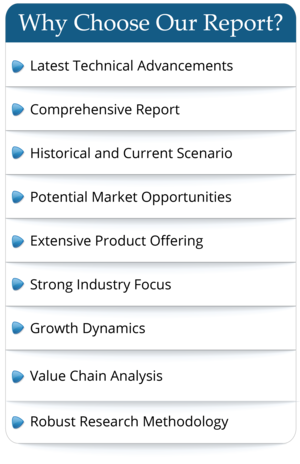Global Peripheral Arterial Disease (PAD) Therapeutics Market Research Report 2022
SKU ID : QYR-21348629 | Publishing Date : 18-Jul-2022 | No. of pages : 92
Peripheral artery disease (PAD) is a narrowing of the arteries other than those that supply the heart or the brain. When narrowing occurs in the heart, it is called coronary artery disease, while, in the brain, it is called cerebrovascular disease. Peripheral artery disease most commonly affects the legs, but other arteries may also be involved. The classic symptom is leg pain when walking which resolves with rest, known as intermittent claudication. Other symptoms including skin ulcers, bluish skin, cold skin, or poor nail and hair growth may occur in the affected leg. Complications may include an infection or tissue death which may require amputation; coronary artery disease, or stroke.[3] Up to 50% of cases of PAD are without symptoms.
The global Peripheral Arterial Disease (PAD) Therapeutics market size is projected to reach US$ 4249.9 million by 2028, from US$ 2940 million in 2021, at a CAGR of 5.3% during 2022-2028.
Fully considering the economic change by this health crisis, Anti-Platelet Drugs accounting for % of the Peripheral Arterial Disease (PAD) Therapeutics global market in 2021, is projected to value US$ million by 2028, growing at a revised % CAGR from 2022 to 2028. While Hospitals segment is altered to an % CAGR throughout this forecast period.
China Peripheral Arterial Disease (PAD) Therapeutics market size is valued at US$ million in 2021, while the North America and Europe Peripheral Arterial Disease (PAD) Therapeutics are US$ million and US$ million, severally. The proportion of the North America is % in 2021, while China and Europe are % and respectively, and it is predicted that China proportion will reach % in 2028, trailing a CAGR of % through the analysis period 2022-2028. Japan, South Korea, and Southeast Asia are noteworthy markets in Asia, with CAGR %, %, and % respectively for the next 6-year period. As for the Europe Peripheral Arterial Disease (PAD) Therapeutics landscape, Germany is projected to reach US$ million by 2028 trailing a CAGR of % over the forecast period 2022-2028.
With industry-standard accuracy in analysis and high data integrity, the report makes a brilliant attempt to unveil key opportunities available in the global Peripheral Arterial Disease (PAD) Therapeutics market to help players in achieving a strong market position. Buyers of the report can access verified and reliable market forecasts, including those for the overall size of the global Peripheral Arterial Disease (PAD) Therapeutics market in terms of revenue.
Overall, the report proves to be an effective tool that players can use to gain a competitive edge over their competitors and ensure lasting success in the global Peripheral Arterial Disease (PAD) Therapeutics market. All of the findings, data, and information provided in the report are validated and revalidated with the help of trustworthy sources. The analysts who have authored the report took a unique and industry-best research and analysis approach for an in-depth study of the global Peripheral Arterial Disease (PAD) Therapeutics market.
Global Peripheral Arterial Disease (PAD) Therapeutics Scope and Market Size
Peripheral Arterial Disease (PAD) Therapeutics market is segmented by players, region (country), by Type and by Application. Players, stakeholders, and other participants in the global Peripheral Arterial Disease (PAD) Therapeutics market will be able to gain the upper hand as they use the report as a powerful resource. The segmental analysis focuses on revenue and forecast by Type and by Application for the period 2017-2028.
Segment by Type
Anti-Platelet Drugs
Dual Antiplatelet Therapy Drugs
Others
Segment by Application
Hospitals
Clinics
Others
By Region
North America
United States
Canada
Europe
Germany
France
UK
Italy
Russia
Nordic Countries
Rest of Europe
Asia-Pacific
China
Japan
South Korea
Southeast Asia
India
Australia
Rest of Asia
Latin America
Mexico
Brazil
Rest of Latin America
Middle East & Africa
Turkey
Saudi Arabia
UAE
Rest of MEA
By Company
AstraZeneca Plc. (UK)
Bayer HealthCare Pharmaceuticals (Germany)
Bristol-Myers Squibb Company (US)
Merck & Co., Inc. (US)
Proteon Therapeutics, Inc. (US)
Sanofi S.A. (France)
Symic Bio, Inc. (US)
TheraVasc Inc. (US)
AnGes MG, Inc. (Japan)
Athersys, Inc. (US)
Betagenon AB (Sweden)
miRagen Therapeutics, Inc. (US)
Multi Gene Vascular Systems Ltd (Israel)
ViroMed Co. Ltd. (Korea)
Frequently Asked Questions
- By product type
- By End User/Applications
- By Technology
- By Region

 Pre-order Enquiry
Pre-order Enquiry Request Free Sample
Request Free Sample


 Request Sample
Request Sample Request Discount
Request Discount










